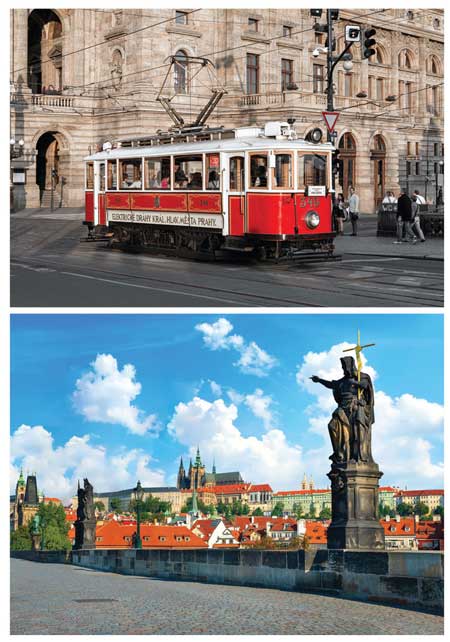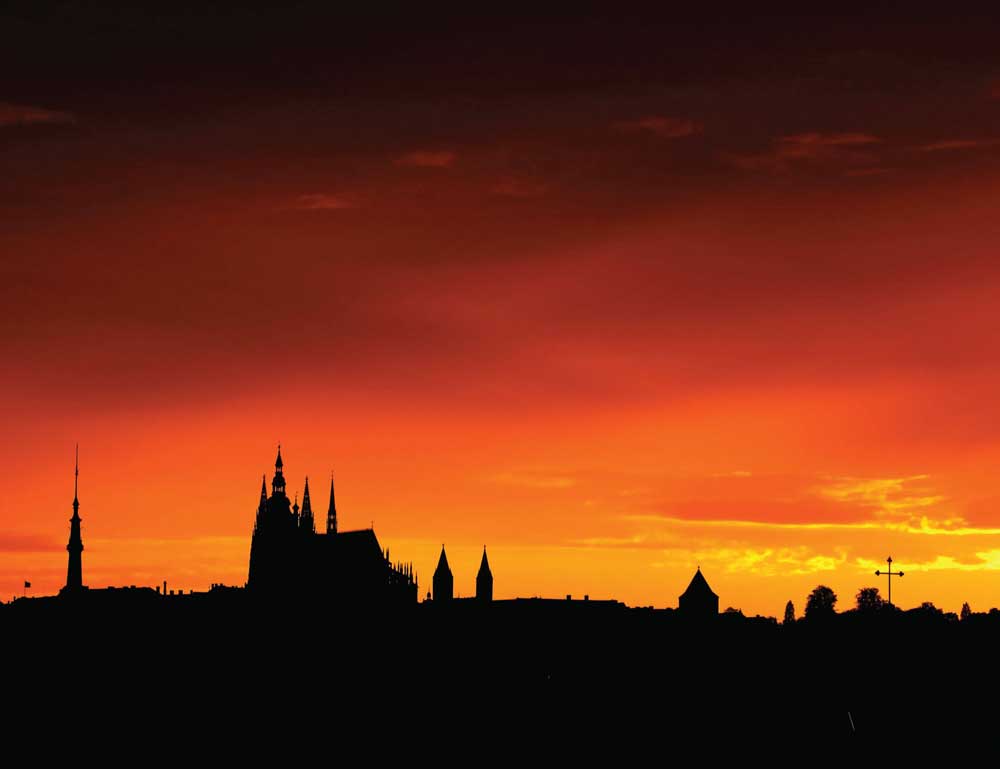BOHEMIAN RHAPSODY
Wish you were here
Czechia’s crown jewels
Sandip Hor is enthralled by the Czech Republic’s capital city Prague a.k.a. Praha

This historical World Heritage Site listed settlement – which showcases bridges, cathedrals, gold tipped towers and church domes adorned with over a thousand pointy spires – is one of Europe’s most sought-after destinations by travellers from around the globe.
Founded in the 9th century during the Romanesque period, the city flourished through subsequent Renaissance and Gothic times when it became the capital of the Holy Roman Empire.
Later, under the Habsburg monarchy, it continued its golden journey as an important seat of the Austro-Hungarian Empire and remained so for 400 years until the end of World War I in 1918 when the city became the capital of Czechoslovakia.
After World War II, the city remained under Soviet influence until the fall of the Berlin Wall in 1989, which triggered the end of communist dominance in many European nations. The country was later split in two in 1993 – Slovakia and the Czech Republic – and Prague continued as the capital city of the latter.
 WHERE TO STAY Like many other European cities, there are numerous options from hotels and guesthouses to backpacker hostels.
WHERE TO STAY Like many other European cities, there are numerous options from hotels and guesthouses to backpacker hostels.
Located in the historical centre of Prague on Wenceslas Square is the Jalta Boutique Hotel. It is an architectural gem of postwar socialist realism, and offers excellent service and value.
WHERE TO EAT Visitors shouldn’t leave the city without sampling its steak tartare, which is cut, scraped or minced raw beef served with condiments; a stewed beef sirloin known as svíčková; and kulajda (a creamy soup).
These items are considered the stars of Czech cuisine and are available in eateries serving traditional food. Restaurants such as U Červeného Páva, U Kroka and Kuchyň are local favourites.
WHERE TO SHOP The city offers plenty of modern shopping malls and megastores, boutique shops and flea markets for retail therapy.
With over 150 shops, the Palladium shopping centre on Republic Square is worth exploring. And there are the world-famous Bata shoe stores – a brand pioneered by Czech entrepreneur Tomáš Bat’a in the early 20th century.
WHERE TO GO The Vltava River divides Prague into two parts. There are 18 bridges to cross it and the most famous is the 515 metre long pedestrianised Charles Bridge that’s flanked on both sides by 30 decorative statues of saints.
In the 11th century, the Old Town was a marketplace but gained its status as a township two centuries later, after palaces, churches, towers and administrative buildings sprang up around the square.
The highlight of the architectural ensemble is the Old Town Hall with its astronomical clock, which is a symbol of Prague. Installed in the 15th century, the feature of the timepiece that attracts visitors is the procession of 12 apostles at the strike of every hour.
An area of the Old Town is the ancient Jewish Quarter; it is ranked among the most valuable Jewish historical monuments on the planet. Its 13th century synagogue is said to be the oldest Jewish shrine in the world.
The 9th century Prague Castle on the other side is a national monument that symbolises the evolution of Czech history. Spreading over an area of over 45 hectares, the hilltop citadel is home to impressive palaces, churches, chapels, halls and towers – from the Romanesque and Gothic periods – to the Renaissance additions by the last Austro-Hungarian emperors.
This makes the visual experience similar to flipping through the pages of a textbook on European history.
However, the jewel of the castle quarter is the St. Vitus Cathedral, which took almost 500 years to be built. And the public can climb up the top of its soaring towers for a breathtaking view of Prague.





